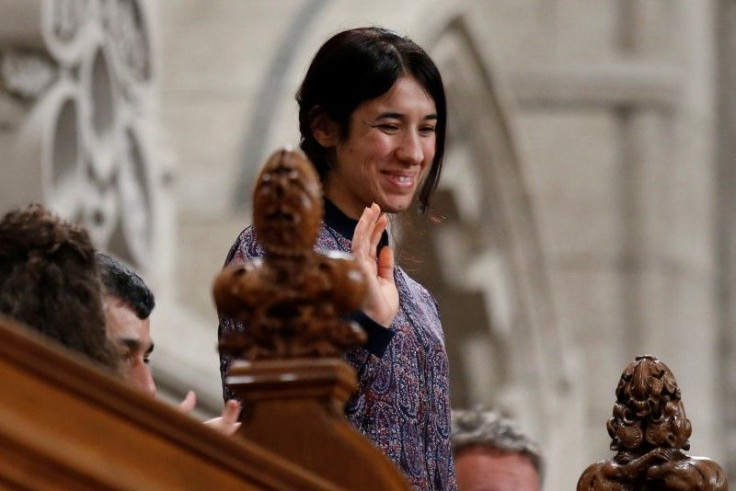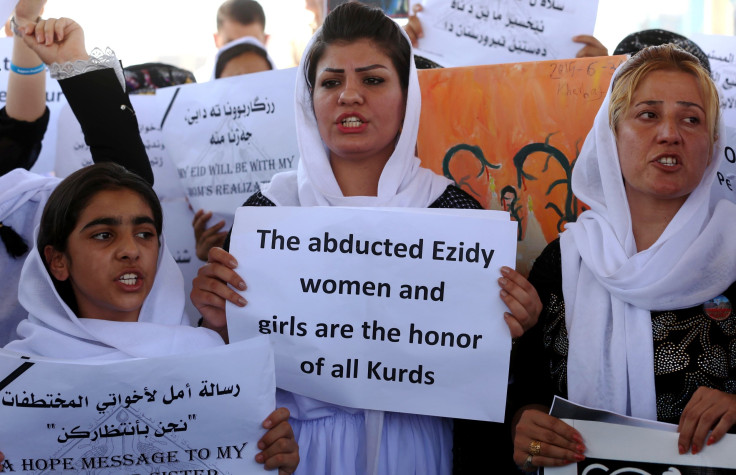Who Are The Yazidis? Religion Of EU Human Rights Award Winners Explained

The plight of the Yazidis has been cast into the spotlight after two women of the ethnically Kurdish community won the European Union’s top human rights award on Thursday. Nadia Murad and Lamiya Aja Bashar were honored with the Sakharov Prize for Freedom of Thought after escaping sexual slavery at the hands of the Islamic State group, also known as ISIS.
The two women who now campaign for the Yazidi community were described by the leader of the liberal Alliance for Liberals and Democrats for Europe group as "inspirational women who have shown incredible bravery and humanity in the face of despicable brutality.” But who exactly are the Yazidis? Here’s a quick explainer.
Where Are They?
There are an estimated 700,000 Yazidis worldwide. While there are populations in Turkey, northern Syria and Georgia, the majority reside in northern Iraq. However, persecution from ISIS led to as many as 40,000 Yazidis fleeing their ancestral homes to the Sinjar Mountains in northwestern Iraq, where they were trapped without food or water.
What Do They Believe?
The origins of the Yazidis can be traced to the seventh century with a sheikh of the Umayyad caliphate. But the figure credited as being the founder of the faith is Sheikh Adi ibn Musafir, a Sufi preacher, in the 12th century. Yazidism is derived from Zoroastrianism, an ancient Persian monotheistic religion, as well as Islam and Christianity.
Yazidi literally means “Worshippers of God,” derived from the Persian “ized,” but Muslim extremists who have repeatedly persecuted them take the opposite interpretation. Yazidis believe in a supreme being known as Yasdan, who has seven great spirits, the greatest of which is the Peacock Angel named Malak Taus. It is because of this narrative of a fallen angel, which has similarities with the story of Iblis – the name for the devil in Islam – that Yazidis have been called “devil-worshippers” by some Iraqi Muslims.

Why And How Has ISIS Targeted Them?
At the heart of the persecution of Yazidis is the misunderstanding of them as “devil-worshippers.” While for many Sunni and Shiite Muslim this was more of a light-hearted insinuation, ISIS has taken the claim of Satanism very seriously. After storming Sinjar in August 2014, the Islamic State killed around 3,000 men and older women while taking 3,500 women and children as slaves. Earlier this year, the United States Secretary of State John Kerry accused ISIS of committing “genocide” against Yazidis, as well as Christians and Shiite Muslims.
After Sinjar was retaken by Kurdish forces in November 2015, mass graves holding the remains of more than 100 people were discovered.
© Copyright IBTimes 2025. All rights reserved.





















